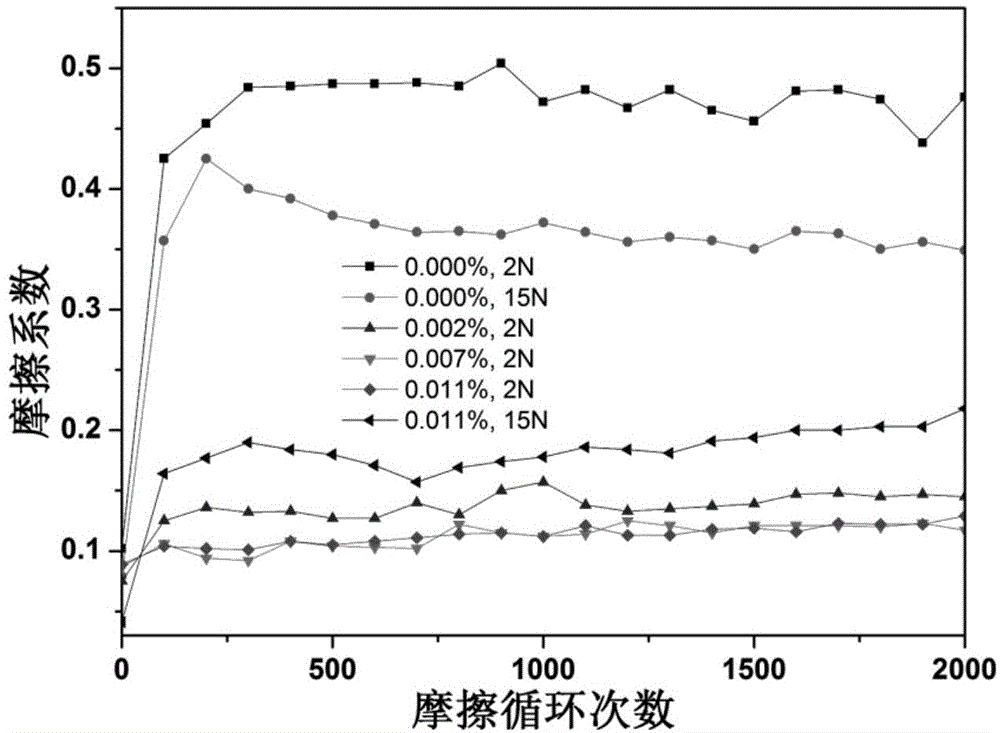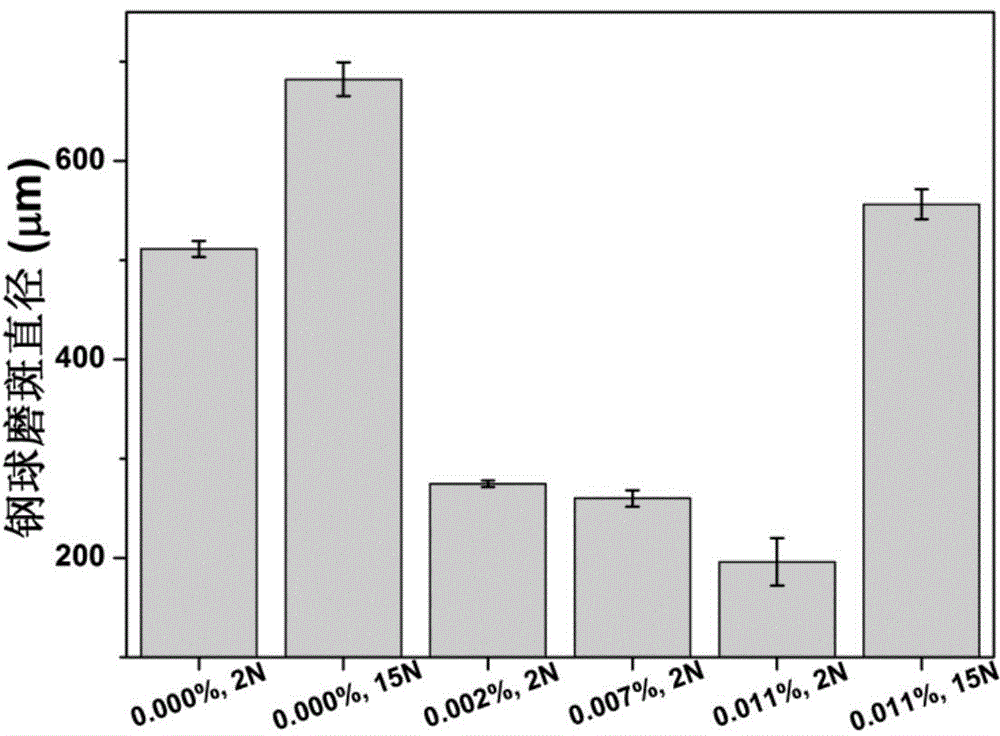Method for preparing graphene water-based lubricating agent in situ
An in-situ preparation and lubricant technology, which is applied in the direction of lubricating composition and petroleum industry, can solve the problems of complex preparation process, increase of interlayer friction coefficient, high preparation cost, etc., achieve simple preparation process and method, improve anti-wear and reduce Good friction performance and processing performance
- Summary
- Abstract
- Description
- Claims
- Application Information
AI Technical Summary
Problems solved by technology
Method used
Image
Examples
Embodiment 1
[0041] Step 1: Weigh 0.3g of surface modifier Triton X-100, add 300mL of deionized water, and vigorously stir for 12 hours to fully dissolve the surface modifier in water to obtain a solution for preparing a water-based lubricant (Triton X-100 -100 mass ratio is 0.1%);
[0042] Step 2: Take 1.5g of graphite powder (particle size less than 325 mesh) and add it to the prepared solution, stir until it is uniformly dispersed to obtain a graphite dispersion (0.5% by mass of graphite powder), and put it into a container with a cover in the Erlenmeyer flask;
[0043] Step 3: soak the Erlenmeyer flask containing the graphite dispersion in the container of the ultrasonic cavitation generating device (filled with water in advance), and perform ultrasonic cavitation treatment for 8 hours, during which the water temperature in the container is maintained by means of circulating cooling Below 40°C; the power of the ultrasonic cavitation generator is 120W, and the frequency is 40KHz;
[0...
Embodiment 2
[0048] Step 1: Weigh 0.3g of surface modifier Triton X-100, add 300mL of deionized water, and vigorously stir for 12 hours to fully dissolve the surface modifier in water to obtain a solution for preparing a water-based lubricant (Triton X-100 -100 mass ratio is 0.1%);
[0049] Step 2: Take 3g graphite powder (particle size is less than 325 orders) and add in the prepared solution, stir until it is uniformly dispersed, obtain graphite dispersion (graphite powder mass ratio 1%), and put it into a cone with a cover in a bottle;
[0050] Step 3: soak the Erlenmeyer flask containing the graphite dispersion in the container of the ultrasonic cavitation generating device (filled with water in advance), and perform ultrasonic cavitation treatment for 8 hours, during which the water temperature in the container is maintained by means of circulating cooling Below 40°C; the power of the ultrasonic cavitation generator is 120W, and the frequency is 40KHz;
[0051] Step 4: After ultraso...
Embodiment 3
[0055] Step 1: Weigh 0.3g of surface modifier Triton X-100, add 300mL of deionized water, and vigorously stir for 12 hours to fully dissolve the surface modifier in water to obtain a solution for preparing a water-based lubricant (Triton X-100 -100 mass ratio is 0.1%);
[0056] Step 2: Take by weighing 6g graphite powder (particle size is less than 325 orders) and add in the prepared solution, stir until it is evenly dispersed, obtain graphite dispersion (graphite powder mass ratio 2%), and put it into a cone with a cover in a bottle;
[0057] Step 3: soak the Erlenmeyer flask containing the graphite dispersion in the container of the ultrasonic cavitation generating device (filled with water in advance), and perform ultrasonic cavitation treatment for 8 hours, during which the water temperature in the container is maintained by means of circulating cooling Below 40°C; the power of the ultrasonic cavitation generator is 120W, and the frequency is 40KHz;
[0058] Step 4: Afte...
PUM
| Property | Measurement | Unit |
|---|---|---|
| particle size | aaaaa | aaaaa |
| diameter | aaaaa | aaaaa |
Abstract
Description
Claims
Application Information
 Login to View More
Login to View More - R&D
- Intellectual Property
- Life Sciences
- Materials
- Tech Scout
- Unparalleled Data Quality
- Higher Quality Content
- 60% Fewer Hallucinations
Browse by: Latest US Patents, China's latest patents, Technical Efficacy Thesaurus, Application Domain, Technology Topic, Popular Technical Reports.
© 2025 PatSnap. All rights reserved.Legal|Privacy policy|Modern Slavery Act Transparency Statement|Sitemap|About US| Contact US: help@patsnap.com



